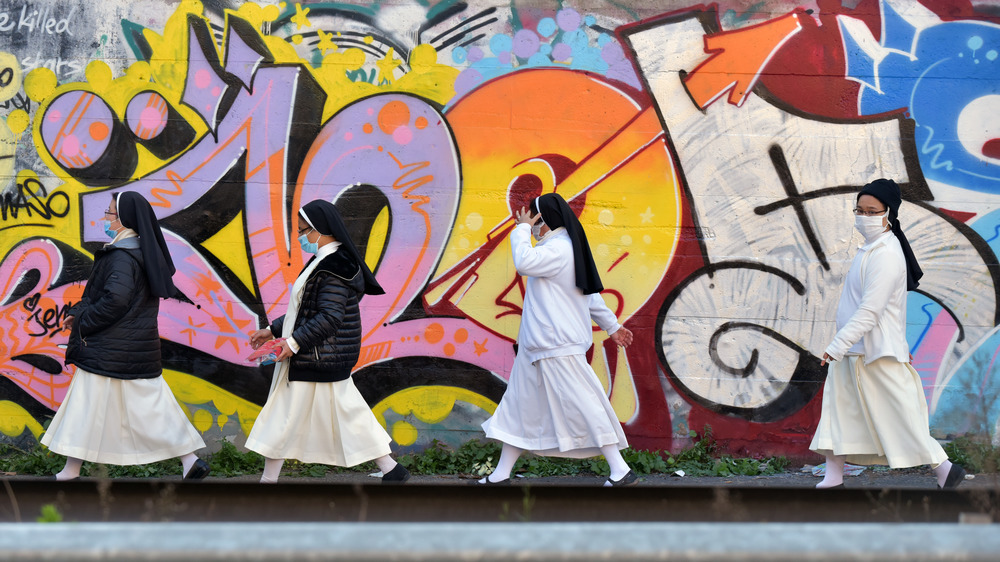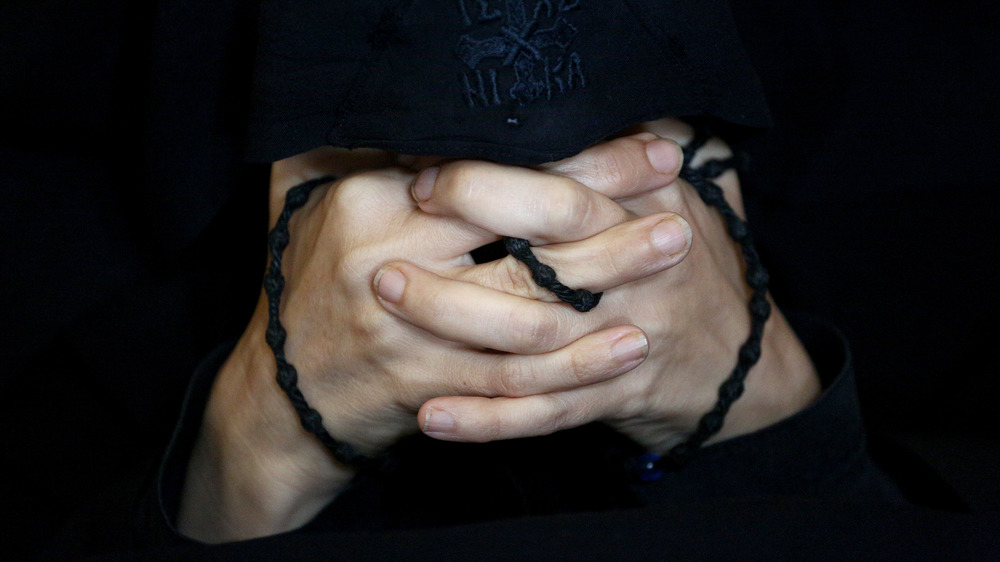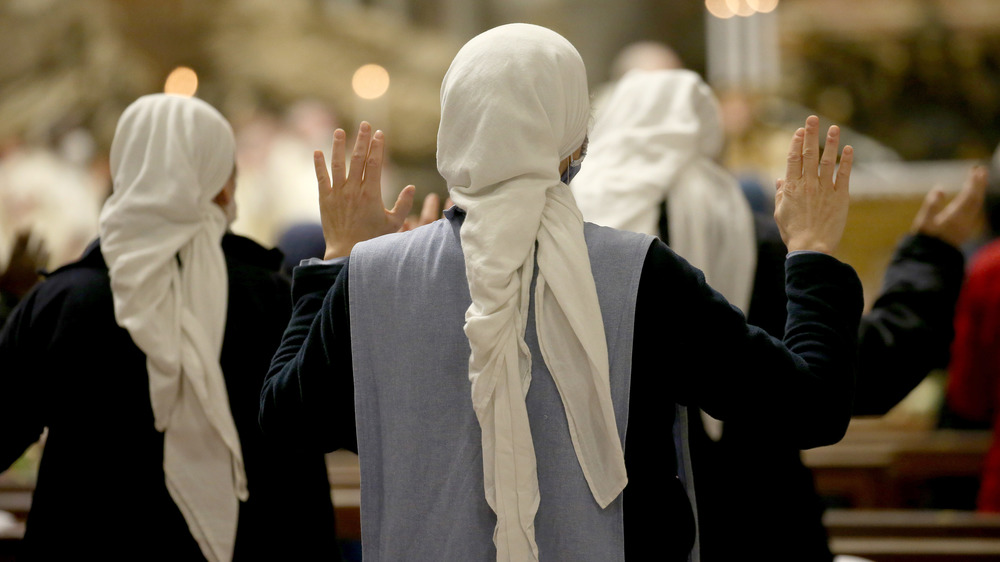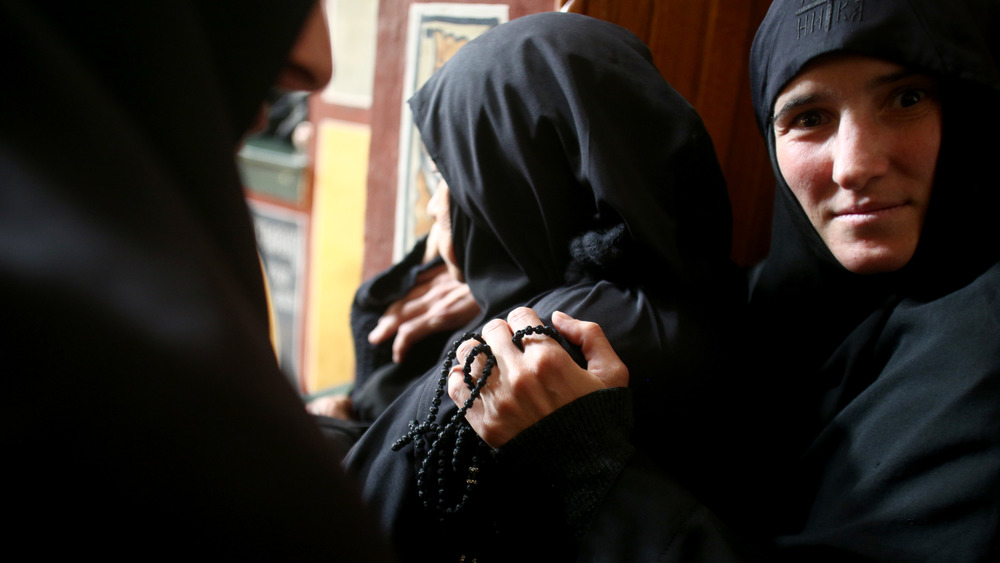
Rules That Many Nuns Have To Follow
“In silence and stillness they earnestly seek the face of the Lord and never cease making intercession with the God of our salvation that all men and women might be saved.”
– Book of Constitutions of the nuns of the Orders of Preachers, Chapter II, 4
This quote, belonging to the 13th-century Dominican Order of Preachers, or “Dominicans,” founded by Spanish friar Dominic de Guzman, summarizes the role and lives of not only Dominican nuns, but all nuns, fairly well. As the French website Service des Moniales (“Service of the Nuns”) shows us, there is a vast array of monastic orders of nuns and priests contained with the umbrella of the Catholic faith — there are even four different branches just of Dominicans, as seen on Dominican Life. In the end, traditions, ceremonies, and rules of conduct may differ from order to order, or convent to convent — like the Sisters of Immaculate Health in Mexico, who care for a nearly-extinct salamander, the axolotl, per the BBC – but these dissimilarities are minor or fringe more often than not.
The overarching, shared lives of nuns might just conform to general expectations: living cloistered in a monastery, lots of silent prayer, no earthly possessions, no sexual relationships, and avoiding any change of habits (credit to Elvis for that joke, per YouTube). Some of the more well-known religious rules have certainly seeped into public consciousness — vows of chastity, poverty, and obedience — but how do they translate into nuns’ daily lives?
Differences between a 'sister' and a 'nun'
One of the most important things to note at this point is the often-confused difference between a “sister” and a “nun” (further confused by the fact that nuns refer to each other by the title “Sister”). As Simply Catholic points out, a “sister” deals with outreach. They might work in healthcare, or do community work like at soup kitchens — that type of thing. As the blog A Nun’s Life shows, sisters such as Sister Julie head off in the morning to the non-profit, liturgical publisher Loyola Press and more or less have a typical workday. Sisters usually live in a convent — a sister-based residence that might contain a chapel, individual rooms, and so on — and leave when necessary.
A “nun,” on the other hand, never leaves the monastery (residence). They live lives “separated, consecrated to God,” as Sister Clare Joseph, a Carmelite nun in Terre Haute, Indiana, says on YouTube (she herself worked in outreach before turning to the silent, meditative life of a nun). If you envision a Buddhist monk, or any other cross-cultural, universal idea of an isolated, hermetic individual dedicating their lives to quiet study, introspection, and a focus away from all things secular, then you’ve got a good baseline from which to work to understand the rules nuns have to follow. In the case of nuns, the aforementioned term “intercession” explains a lot, too: they believe that they are entreating the divine on behalf of humanity.
A centuries-old daily schedule of mindfulness
A modern nun’s overall, basic schedule isn’t too different from what it would have been hundreds of years ago, as History Learning Site explains: get up, pray, eat, pray, clean a bit, read, work, have some conversation, and so on. Every nun nowadays has to follow their order’s and monastery’s daily schedule. Some are stricter than others, and some are more outgoing.
Orders such as the Benedictines in Herefordshire, England, per their website, get up at 5 a.m., pray, eat, have free time, work in the garden, and so on. The Visitation Sisters of Philadelphia, as their website states, start the day at 5:30 a.m. and engage in similar activities, including arts-and-crafts projects and computer-based projects. The Carmelites of Colorado Springs, according to their website, do a lot of sewing and domestic activities, as well as bookkeeping and community correspondences online. Interspersed within these schedules is the Liturgy of the Hours, as this Quora thread outlines, a series of prayers and services throughout the day, such as “lauds” (first service) or “compline” (last service). Also, as this video by an Anglican nun on YouTube says: dishes. Lots and lots of dishes.
The general attitude of the entire proceedings is reverent and internal, or as St. Paul called it: “pray without ceasing” (1 Thessalonians 5:17-19, per the King James version on Bible Gateway). If you’ve ever heard the word “mindfulness” — remaining appreciative of the moment, one’s life, the world’s interconnectedness — then you’ve got the idea.
Unbreakable tenets
That takes us to the big ticket items that most people know, which are universal for all nuns: the vows of chastity, poverty, and obedience.
Nuns’ vow of chastity gets a lot of attention, as it’s understandably difficult for most folks to accept and imagine. As Sister Julie says on A Nun’s Life blog, sexual relationships are prohibited, no matter how much desired. Even though, she admits, sex is “a powerful experience of union and love,” nuns elect to express their love in non-sexual ways like community service, prayer and devotional activities, and communing with the divine in a more universal way. The phrases “married to Jesus” or “Brides of Christ” are often invoked in this case.
A vow of poverty may be equally difficult to imagine, but Sister Monica Clare Powell (born Claudette Monica Powell) does a good job of explaining it on a YouTube video. If you’ve ever felt swallowed by the emptiness of a consumerist life and the hollow, unending appropriation of meaningless goods, then the idea of living simply might sound appealing. And that’s what it really is, as A Nun’s Life blog again explains: a “vow of poverty, not destitution.” Pare down, dial it back. Own your own soap, of course, but detach yourself from material things in lieu of spiritual things (a sentiment shared by numerous other faiths).
And finally: obedience. Obedience to what? Well, as Ask a Catholic explains, to a life lived in imitation of Jesus.
The path from 'aspirant' to 'fully professed'
Of course, following all these rules isn’t for everyone. But for those who decide on particular life path, there’s a sequence of steps that must be followed — a multi-year application process — to ensure that would-be nuns are serious about the whole thing. There are differences according to order (Benedictines vs. Dominicans vs. Passionists, and so on), but the overall structure is the same for everyone, as Aleteia outlines.
Being an “aspirant” means that someone has formally approached an order and said that they want to join. They continue to live amid society for another year or two while doing outreach, projects, teaching, monitoring social media — whatever needs doing — with their chosen community. A “postulant” has “formally moved in” to a monastery. But she’s not allowed to be called a “sister” and wears different clothing from nuns who have made their final steps. This is supposed to be a time of intense inward focus that lasts maybe six months.
A “novice” has been officially accepted and can start classes and training, take vows, and possibly change her name (like Sister Powell, mentioned before). After this, there are ranks leading up to “fully professed” nun, and eventually “mother superior,” who’s in charge of a monastery.
Some other rules nuns have to follow, as Kiwi Report says? Keep on your habit. No “luxury” foods. And as of a 2016 papal instruction by Pope Francis: limit social media (per Culture Trip).

Everything Hannah Snell Accomplished By Pretending To Be A Man

The Archangel Michael: The Untold Truth

Could The Handmaid's Tale Ever Actually Happen?

The Mystery Of Australia's Pink-Colored Lake Hillier
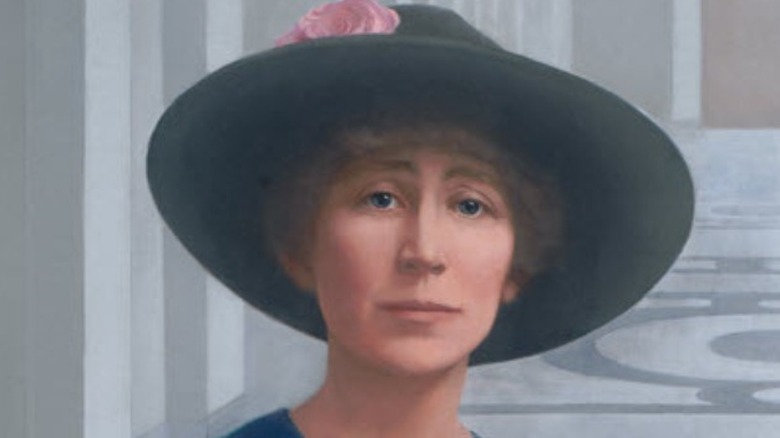
The Untold Truth Of The First Woman Elected To Congress
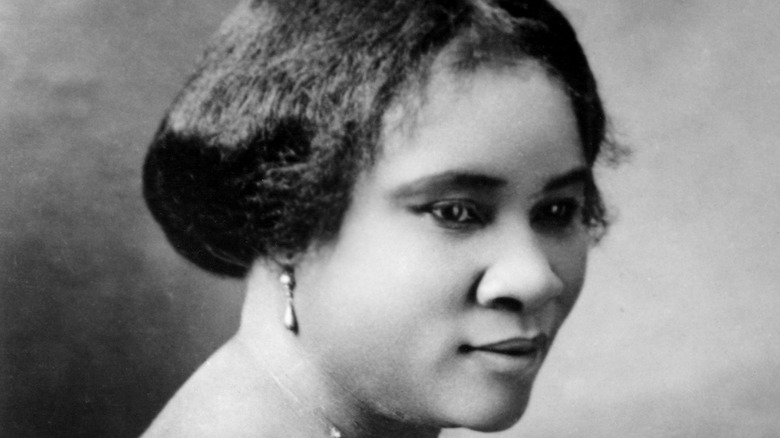
A Look At Madam C.J. Walker's Childhood

The Most Dangerous Motorcycle Clubs In The World

The Tragic Fate Of Oscar Wilde's Half-Sisters

Here's How Much Gage County Owes The Beatrice Six

The Hidden Meaning Of U2's 'Exit'
